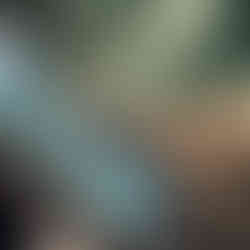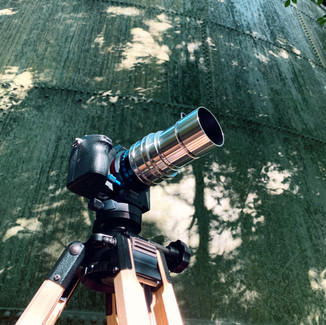Shooting New Old Stuff
- Dominik

- Mar 20, 2020
- 6 min read
Updated: Aug 9, 2021
I love great gear! Well, given the theme of this website, it might not be such a big surprise. However, my appreciation for things well-built does not stop inside of control rooms at all. Great engineering and the resulting tools of the trade can be drooled upon in many fields, and so this article is not about an audio related topic for a change – let’s talk about taking pictures!

“Taking an image, freezing a moment, reveals how rich reality truly is.” — Anonymous
On the surface, this static interpretation of photography seems to be very contrary to the vibrant nature of music. But, getting involved into both worlds, a lot of astounding parallels start to pop up everywhere. Like dynamics in light and sound: Dark and bright, quiet and loud. Or think about the inflationary use of “color” for trying to describe how a certain piece of audio gear is supposed to sound like! And the circumstance that talent and experience are way more important than technology itself…
Like master photographer Sam Abell said: “It matters little how much equipment we use; it matters much that we be masters of all we do use.” True, true, true. But being very far from the slightest grade of mastery in photography (so, not much glory to talk about), and considering the fact that a rose is a rose and great gear is great gear, let’s take the chance to have a quick look at the goodies used at NEOLD for shooting some of new old stuff anyway.
Spinning and rolling
I have a certain affinity for presenting vintage devices and components in organic and natural surroundings instead of rather clean (photo) studios, which in many cases means: Shooting outside. And this really is a challenge in itself. Dust, rain, people, insects, wind, clouds. Actually, I had never realized how fast our planet really spins before trying to shoot series of photos in full sunlight with ‘fixed’ light/shadow areas created by tree branches hovering above the scene.

Anyway, whenever accepting the challenge, the absolutely greatest piece of equipment to have is… our children’s hand cart. Really, getting the camera, lenses, tripod, cleaning stuff and sufficient drinking water into the forest wouldn’t be much fun without this tried and trusted helper. Covering it all with a blanket helps to keep the dust outside, but it also helps people to speculate you’re hitting the woods with a box of beer.
III is a charm
Still no technology in sight? Well, let’s get it on! My main camera is an α7 III. Absolutely everything has been said about this wonderful body already by way more experienced people than me, and as we can expect Sony to do quite okay even without further advertising, let’s reduce to the essential qualities that triggered my individual buying decision:
• Absolutely convincing image quality
• Exceptional low light performance
• Flexible and fast auto focus
• Very long battery life
• Compact and high-quality build
Like everything, the α7 III isn’t perfect. For example, it shares today’s problematic tendency of feature overload – a bothersome scourge of our time. Menu after menu after menu! On the other hand, the touch screen seems quite limited… don’t expect it to behave like your smart phone, or you will be disappointed. But there is really no reason for dissing this amazing full-frame camera at all: It lets you take outstanding pictures, often even without the slightest bit of mastery involved at all.

Cutting edge
There are many great lenses for the α7 out there, and you can easily spend a fortune building up your personal selection. Hello audio lovers, does that ring a bell? And talking about it, here comes the next striking parallel: As much as the most amazing preamp cannot deliver without a decent mic, the best of cameras will suck without an excellent lens. Right now, most photos for NEOLD are taken with a Sony SEL-55F18Z, and there are many reasons to love this fine glass:
• Outstanding sharpness and clarity
• Even with wide open aperture
• Great colors and contrast
• Wonderful bokeh
• Silent, fast and accurate focus
• Compact and light in weight
The SEL-55F18Z is a prime lens, which means that it has a fixed focal length. Sure, zooming in and out needs to be done by foot for this reason, but the straight-forward construction comes with the benefit of superior optical characteristics. Funny how it always boils down to less being more… I know this much is true: Limiting the options helps to focus on the essential – no matter if you’re shooting an attractive motif or recording a beautiful song.
And now for something completely different
Welcome my Nemesis: The Lomography Daguerreotype Achromat 2.9/64 Art Lens. If you think reading it out loud is complicated, spending some time with this *special* lens will teach you the tongue twisting name is just the beginning of a photographic journey with regular downs and occasional, incredible ups. Sexy or not, there are many things to question about this chrome plated relic:
• It is as bulky as it is beautiful
• It is so heavy that I decided to get an additional support (Novoflex Astat-Nex)
• There is no native version for Sony, so it needs an additional adaptor (Novoflex Nex/Nik)
• It is fully manual, so there is of course no autofocus available at all
• Finding the ‘correct’ focus is tricky, often a matter of trial and error
• Waterhouse aperture system requires to manually insert different plates for each stop
So, what on earth made me buy this thing? Love at first sight for a start, that’s undeniable. But there is more to it. The Daguerreotype Achromat is directly inspired by the world’s first photographic optic lens – a 19th century invention created for the Daguerreotype camera by Charles Chevalier. And this really shows in the pictures you take with it. It’s like traveling back in time, with everything instantly looking vintage, kind of soft and authentically textured.

And the endless quarrel with the aperture plates (not to mention the fear of losing them in the woods) can turn out to be very worthwhile, too. You can experiment with a variety of bokeh effects with the Waterhouse aperture system by inserting different plates into a shaft in front of the lens elements. For softer, more painterly effects, Lomography has also developed Lumière and Aquarelle aperture plates.
“The Lumière aperture plates yield a soft glow and a delicate grained background, while the Aquarelle aperture plates produce a rich and textured effect, similar to watercolor masterpieces.” — Lomography

You know the difference between recording amazing musicians in a finished first take and spending endless hours with the DAW, trying to improve what hasn’t been there in the first place. Just like that, the Daguerreotype Achromat delivers authenticity when it comes to shooting a vintage look without endless photoshopping. To make a long story short, there are tons of creative possibilities in this lens – if you have the time, passion and patience to dig deep enough. The time factor is really essential, so I find myself using this unique lens less often than I would like to. But whenever I do, I end up smiling after all the swearing for sure.
Taking a stand
Deciding for a camera stand can be even more confusing than choosing the camera itself! How many legs: One, three, or even four? Which material: Aluminum, carbon, wood?
How high and low do you need to go? And even worse, you also need to mount a head, multiplying the options to infinity…. Choices, choices.
My individual solution for this question started to form when I realized that I wanted to have something really sturdy. No weak and wobbling tripod legs, no twisting and turning heads. I wanted something rock-solid, and with this mantra in mind my search only lasted until I stumbled upon the Berlebach 332 tripod.

Berlebach is a traditional German company which has been manufacturing stands for telescopes and photo equipment for more than 120 years from locally grown ash wood. This certainly looks very nice, and these wooden stands are extremely sturdy and especially immune against vibrations as well. Although I’m trying to avoid it, I have seen people placing their 332s in rivers and lakes without ever blinking an eye.

What’s also really cool is that the manufacturer gives you quite a selection of integrated heads to choose from, and instead of opting for a complicated solution with lots of bells and whistles I just went for a basic but really massive ball. Tight is tight with this one, a completely different story from the smaller ball heads I had tried before (especially with a heavyweight lens like the Daguerreotype Achromat).
Coming back to our ubiquitous audio/photo duality one more time, it seems that I just can’t escape my own skin, as I was never really satisfied with all kinds of rickety mic stands until finally finding the micKing 1100 by Latch Lake which settled things once and for all ;-)
Hey, wait a minute?!
Okay, this equipment list is quite limited, but that’s also the beauty of it. It is amazing what can be achieved within these limitations once creativity kicks in. Of course I’m only human, so peeking at all the nice available options from time to time feels only natural. But in the meantime, I try to stay, well, focused.
One final question before closing this excursion on audiophile photo goodies: Why does this guy keep talking about top notch equipment and sensationally sharp images when most of the photos in this post simply aren’t? Reason #1: Me. Reason #2: Compression. Reason #3: The α7 III is amazing, but it cannot perform dimensional shifts (yet). This is why I needed to rely on my good old (sic) smart phone for getting this article covered. Well, there you have it.















Comments